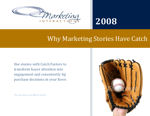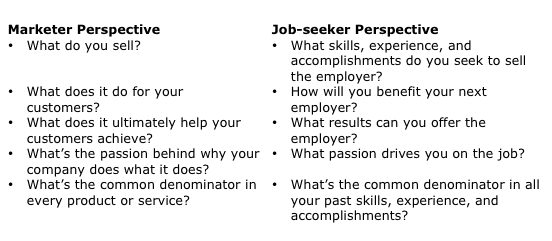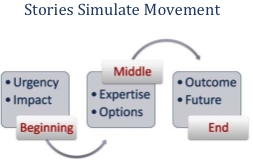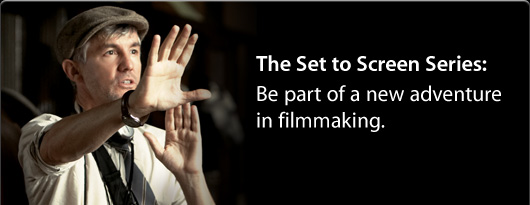 Marketing Interactions is offering a very cool, free e-book called Why Marketing Stories Have Catch. It’s full of excellent descriptions of how and why stories are so effective for marketing. Author Ardath Albee aptly refers to stories as “stealth marketing.”
Marketing Interactions is offering a very cool, free e-book called Why Marketing Stories Have Catch. It’s full of excellent descriptions of how and why stories are so effective for marketing. Author Ardath Albee aptly refers to stories as “stealth marketing.”
Much of the principles in the e-book also relate to marketing oneself in the job search. This set of questions delving into how a company could define its essence can easily apply to job-seekers:
 Albee says stories provide movement, momentum that “pull buyers forward.” In the same way they can pull employers forward:
Albee says stories provide movement, momentum that “pull buyers forward.” In the same way they can pull employers forward:

Albee writes:
> If you’re presenting your leads with bulleted lists of why your product is the best one,
> they have to work too hard to apply the facts to their specific situation. By putting those
> facts into a relatable context (story), you transform the reception and follow‐on interactions taken by your buyers in relation to your marketing programs.
> customers can change the story they tell themselves.
Same goes for employers. They can change the story they tell themselves by relating to the context of you the job-seeker meeting their needs and solving their problems.
Albee cites Seth Godin for the following:
The challenge for marketers is to figure out how to change the story they are living so that their customers can change the story they tell themselves.
Albee adds:
> If they can see themselves in the story, they are more inclined to want to participate.
Just as customers are inclined to participate when they can see themselves in marketing stories, employers are inclined to participate (by hiring the candidate) when they see themselves in the job-seeker’s story.
Most of the “catch” factors that Albee says appeal to buyer attention also apply to the job search:
**Urgency**:
> Every story you develop must play to urgent priorities to gain attention. The more
> personally invested with your story the buyer gets, the more attention you generate.
> Urgency means aligning the story’s “plot” (topic/problem) with a priority for the buyer.
What is the employer’s priority? Tell stories that show your ability to meet the employer’s urgent needs.
– **Impact**:
What will happen for the buyer if they choose to interact with you Buyers are looking for vendors who will educate them on areas beyond their core company expertise. They want trusted partners who work with them instead of just sell them products.
-Will the expertise included in your story have a direct bearing on the buyers’ success in accomplishing their objective?
– How is the value you provide unique in comparison to alternatives?
What stories could you tell that show your expertise and how that expertise will contribute to the employer’s success? What stories can you tell that demonstrate your Unique Selling Proposition — the attributes that set you apart from other candidates for the same job?
– **Reputation**
> This Catch Factor is about how credible you are with the buyer.
Reputation in the job search is closely tied to personal branding. What is your brand, your reputation, your promise to employers? What stories can you tell to enhance your credibility with the employer?
Finally, Albee writes:
By incorporating marketing stories into your content strategy, you enable
your buyers to envision exactly that experience. You want them to live and breathe the successes of your current customers and picture just how much competitive advantage they can gain by adding your expertise to the company roster. You need them to see themselves succeeding.
The exact same principle applies to the job search. Let’s just plug a few different words into the above quote:
By incorporating stories into your **job-search** strategy, you enable **employers** to envision exactly that experience. You want them to live and breathe the successes of your current **and past employers** and picture just how much competitive advantage they can gain by adding your expertise to the company roster. You need them to see themselves succeeding.
The e-book closes with a “Quick Guide to Writing a Marketing Story Article” and accompanying worksheet that could be adapted for developing career and personal-branding stories for the job search.
 Another one of the areas of storytelling that I don’t really deal with in A Storied Career is storytelling within movies and TV. But Apple’s Set to Screen series of podcasts tells the story of the movie-making process.
Another one of the areas of storytelling that I don’t really deal with in A Storied Career is storytelling within movies and TV. But Apple’s Set to Screen series of podcasts tells the story of the movie-making process.




